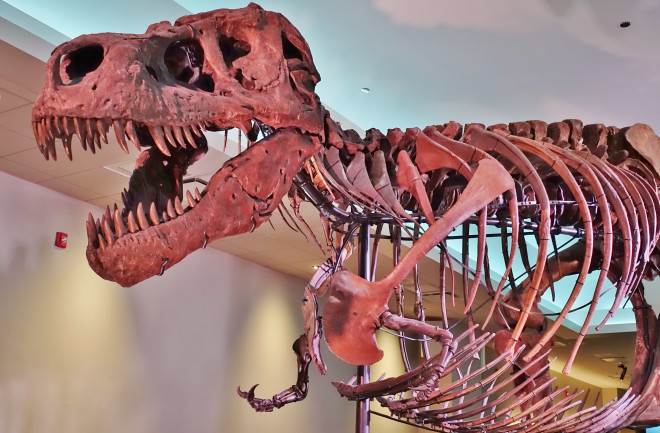The fierce Tyrannosaurus rex is well known for its boxy head, sharp teeth, and petite arms. But why did T. rex have such tiny arms and what did they use them for? Experts have developed various hypotheses for decades. Some say the tiny, seemingly useless appendages, which may have been too small to accomplish anything, might have been well adapted to give other dinosaurs a good slashing from a short distance.
Others suspect they were used for holding on to other T. rexes during mating rituals, to attract mates, for social behaviors, or to get off the ground if they were tipped over. One research team even suspected a T. rex could have bench-pressed about 400 lbs.
But other dinosaurs had arms that were even smaller than the T. rex's. Researchers think these small forearms were a remainder of evolution or a consequence of having more oversized heads.

